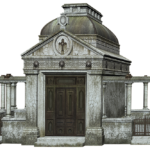introduce
In the world of precise manufacturing, the term "CNC" and "Milling machine" Usually used interchangeably – but they are not the same. Understanding their differences is crucial for engineers, designers and businesses to seek the best solutions. exist GreatWe specialize in advanced five-axis CNC machining, utilizing cutting-edge technology to solve complex metal parts manufacturing challenges. This article breaks down technical differences to help you make informed decisions for your project.
What is a milling machine?
Milling machines are basic tools in machining to remove material from workpieces using rotating tools. Manual milling machine The operator is required to control the movement through handwheels and levers. Regular milling A simple arrangement involving 2D or 2.5D operations (e.g. slots, holes) where the workpiece moves along a linear axis (X, Y, Z). Despite the versatile functionality for basic tasks, manual plants are limited by operator skills, speed and complexity.
What is CNC machining?
CNC (Computer Numerical Control) processing uses programming instructions (G code) to automatically mill the process. The operator designs a part in the CAD software and converts it into code that determines the tool path, speed, and depth. CNC Mills It can be 3-axis, 4-axis or 5-axis, with integrated automation tool changer and coolant system. CNC transforms traditional milling by enabling complex geometry, consistent repeatability and unattended operations. Five-axis CNC, Greglight’s professionalismadds unparalleled precision rotating shafts in aerospace, medical and automotive applications.
Key Differences between CNC and Milling Machine
Control mechanism
- Manual milling: Rely entirely on human skills. Operator adjusts the cutout "Through feeling," Limit accuracy.
- CNC milling: Powered by pre-programmed software to ensure accuracy (±0.001)" or tighter). Ideal for prototypes and large runs.
Complexity and capability
- Manual mill: Limited to simpler geometric shapes. Multi-angle cutting requires repositioning of the workpiece, adding errors.
- CNC Mill: Create organic curves, undercuts and contour surfaces, especially machines that use five-axis machines to dynamically manipulate parts without capping.
Productivity
- Manual mill: Labor intensive and slow. Suitable for single-use or tool room maintenance.
- CNC Mill: The process is batched quickly with minimal supervision. Automatic tool changer reduces downtime.
Cost Meaning
- Manual mill: Cheaper upfront ($10K-$30K), but higher long-term labor costs.
- CNC Mill: Higher initial investment ($50K-$500K+), but lower in scale.
Accuracy and consistency
- Manual mill: Human errors are prone to occur; tolerances are usually ≥±0.005".
- CNC Mill: Achieving microscopic tolerances. It is crucial for medical implants or turbine blades.
When to use which one?
- Select Manual Milling: For simple, low-test tasks; quick fixes; or tight budgets.
- Select CNC milling: Used for materials such as complex geometry, tight tolerances, high volume generation or titanium/inconel.
- Select five-axis CNC: When the part has a free form surface (e.g., impeller, prosthesis) or requires a single kit to maintain accuracy.
Why five-axis CNC is a game-changer
Five-axis CNC machining, Greglight’s core expertiseallowing movement along five axes (x, y, z + two rotation axes). This eliminates repositioning errors, cuts lead times, and unlocks unprecedented design freedom. Our advanced device handles:
- Aerospace Turbine Blade
- Medical components
- Automobile injection mold
We also provide One-stop post-processing (Anodized, polished, heat treatment) is used for simplified manufacturing.
in conclusion
When manual milling machines play a niche role, the machining of CNCs (especially five-axis) attacks modern precision manufacturing. It blends speed, accuracy and complexity to solve challenges that traditional methods cannot reach. exist GreatWe invest in cutting-edge five-axis CNC technology to provide fast, cost-effective solutions for custom metal parts. Work with us for end-to-end expertise: From CAD design to finished products, we ensure excellence in every step.
FAQ
Can CNC machines do everything a manual mill can do?
Yes – CNC machine replication has higher accuracy and automated manual operations, but can be overkill for trivial tasks.
Is CNC machining more expensive?
Initially, yes. However, CNC reduces labor costs and waste in medium/large batches, providing a better ROI.
Why choose five-axis on three-axis CNC?
The five-axis machine performs complex cutting in a single setup, thereby improving the accuracy of the contoured parts. This reduces production time by 60-70% compared to multi-stage three-axis workflow.
What materials can CNC machines handle?
Almost all: aluminum, steel, titanium, brass, plastics and composites. At Greatlight, we specialize in processing hard metals for high-pressure applications.
How does Greatmears ensure the quality of CNC parts?
We combine:
- Advanced Detection: Real-time feedback during processing.
- Post-processing verification: CMM measurement, surface analysis.
- ISO 9001 complies with workflow: Strict quality control is carried out at each stage.
Ready to optimize your precision machining project? Contact Greatlight for a quote about a custom five-axis solution!

















